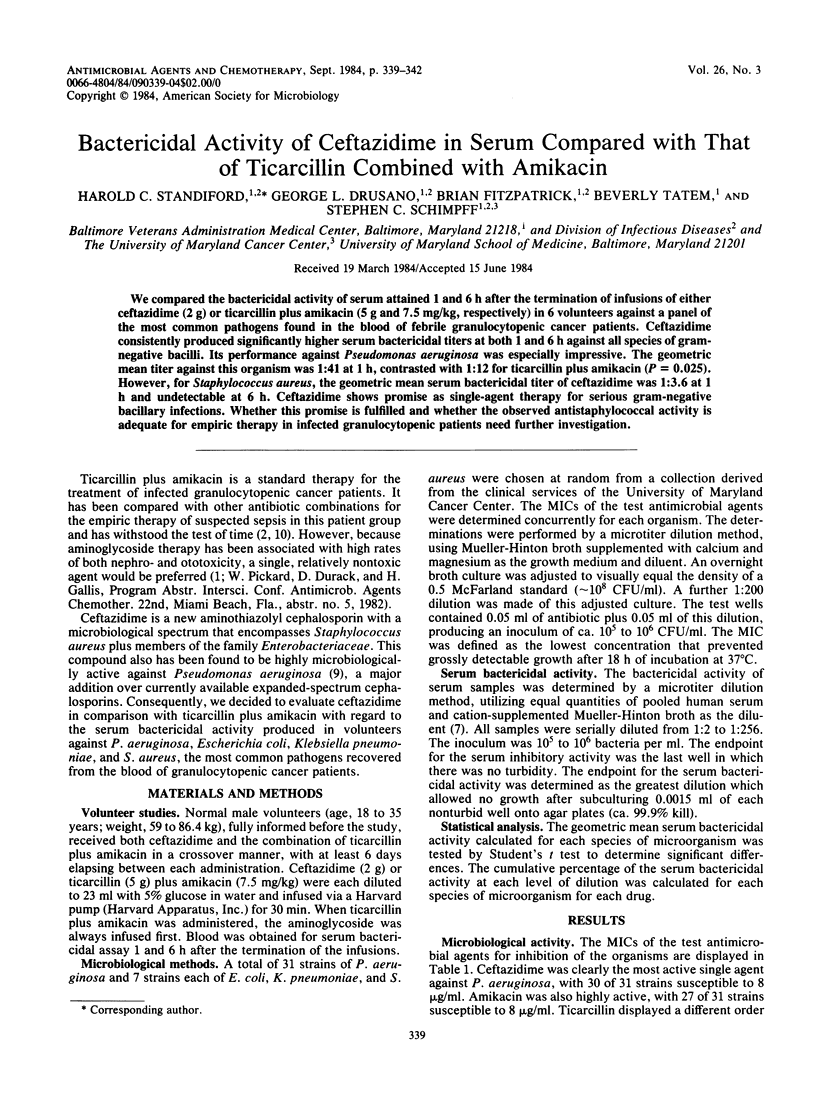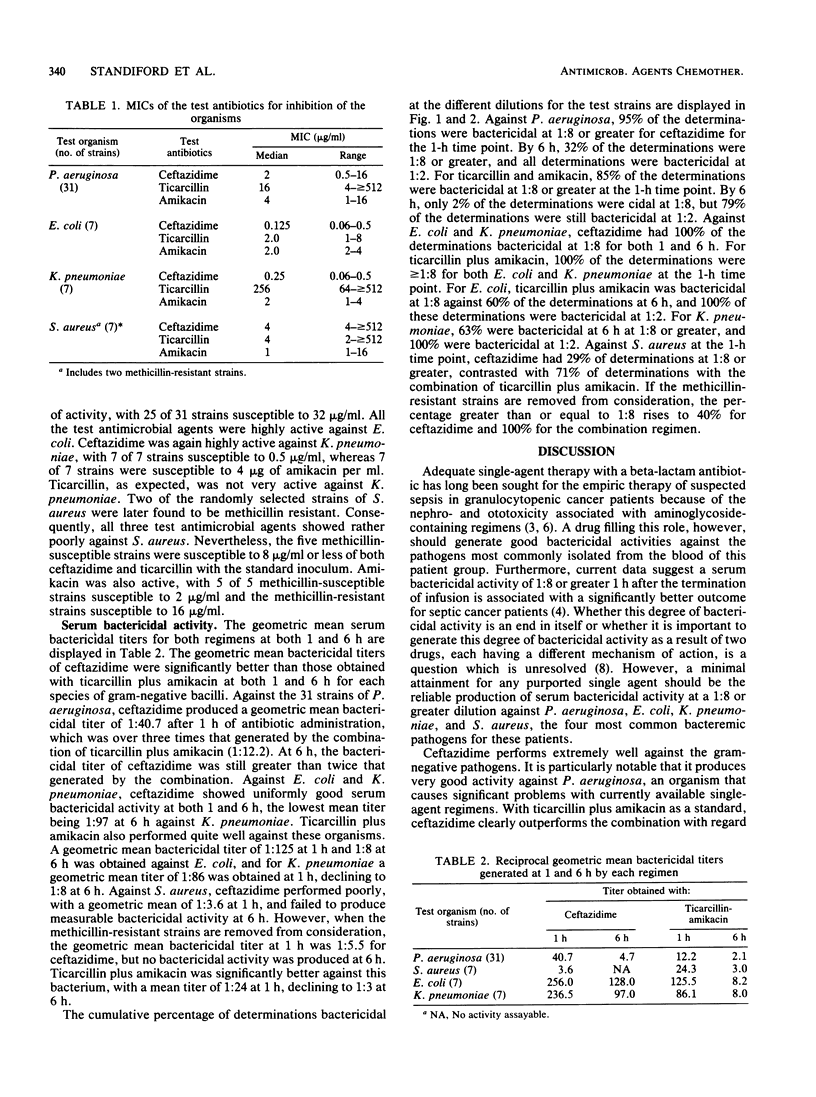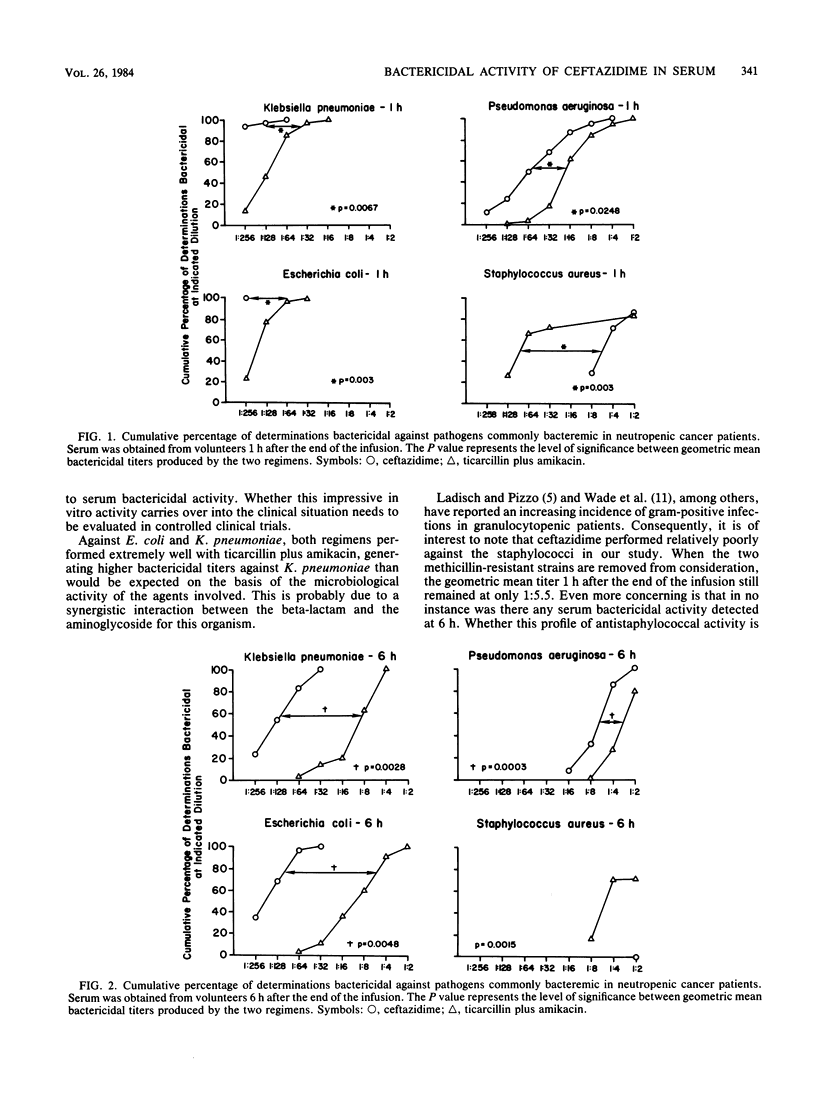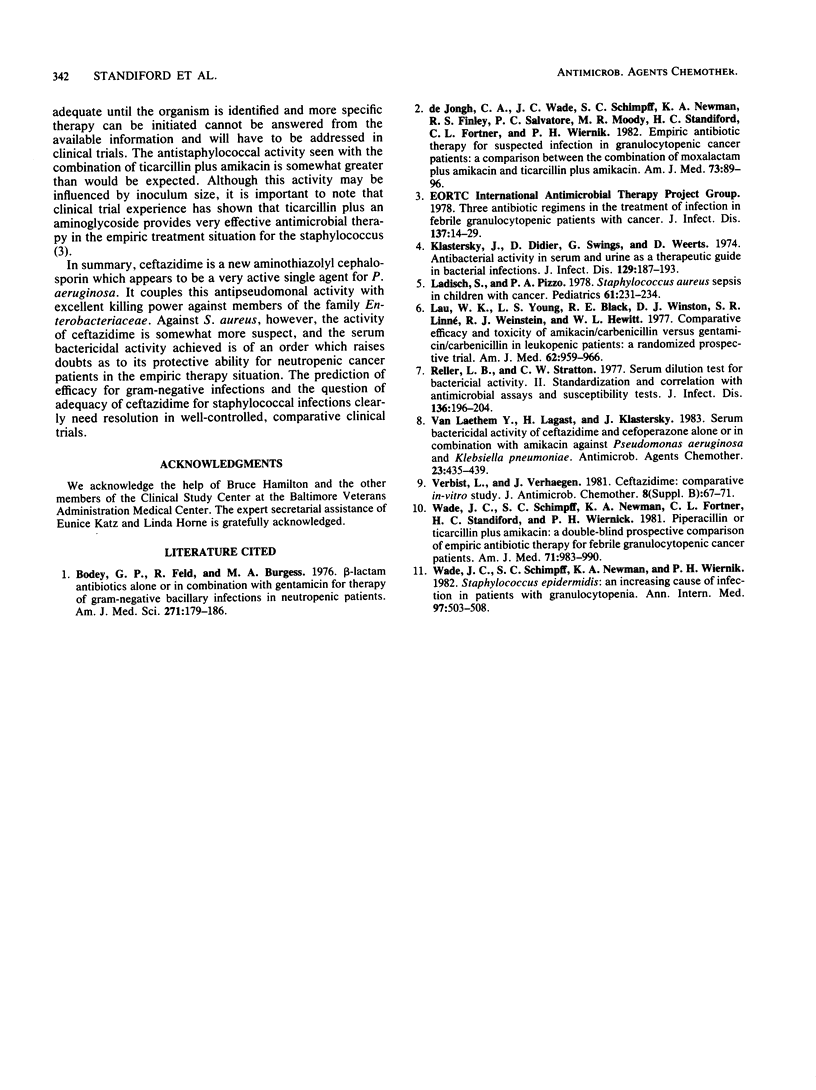Abstract
We compared the bactericidal activity of serum attained 1 and 6 h after the termination of infusions of either ceftazidime (2 g) or ticarcillin plus amikacin (5 g and 7.5 mg/kg, respectively) in 6 volunteers against a panel of the most common pathogens found in the blood of febrile granulocytopenic cancer patients. Ceftazidime consistently produced significantly higher serum bactericidal titers at both 1 and 6 h against all species of gram-negative bacilli. Its performance against Pseudomonas aeruginosa was especially impressive. The geometric mean titer against this organism was 1:41 at 1 h, contrasted with 1:12 for ticarcillin plus amikacin (P = 0.025). However, for Staphylococcus aureus, the geometric mean serum bactericidal titer of ceftazidime was 1:3.6 at 1 h and undetectable at 6 h. Ceftazidime shows promise as single-agent therapy for serious gram-negative bacillary infections. Whether this promise is fulfilled and whether the observed antistaphylococcal activity is adequate for empiric therapy in infected granulocytopenic patients need further investigation.
Full text
PDF



Selected References
These references are in PubMed. This may not be the complete list of references from this article.
- Bodey G. P., Feld R., Burgess M. A. Beta-lactam antibiotics alone or in combination with gentamicin for therapy of gram-negative bacillary infections in neutropenic patients. Am J Med Sci. 1976 Mar-Apr;271(2):179–186. doi: 10.1097/00000441-197603000-00006. [DOI] [PubMed] [Google Scholar]
- De Jongh C. A., Wade J. C., Schimpff S. C., Newman K. A., Finley R. S., Salvatore P. C., Moody M. R., Standiford H. C., Fortner C. L., Wiernik P. H. Empiric antibiotic therapy for suspected infection in granulocytopenic cancer patients: a comparison between the combination of moxalactam plus amikacin and ticarcillin plus amikacin. Am J Med. 1982 Jul;73(1):89–96. doi: 10.1016/0002-9343(82)90935-4. [DOI] [PubMed] [Google Scholar]
- Klastersky J., Daneau D., Swings G., Weerts D. Antibacterial activity in serum and urine as a therapeutic guide in bacterial infections. J Infect Dis. 1974 Feb;129(2):187–193. doi: 10.1093/infdis/129.2.187. [DOI] [PubMed] [Google Scholar]
- Ladisch S., Pizzo P. A. Staphylococcus aureus sepsis in children with cancer. Pediatrics. 1978 Feb;61(2):231–234. [PubMed] [Google Scholar]
- Lau W. K., Young L. S., Black R. E., Winston D. J., Linne S. R., Weinstein R. J., Hewitt W. L. Comparative efficacy and toxicity of amikacin/carbenicillin versus gentamicin/carbenicillin in leukopenic patients: a randomized prospective trail. Am J Med. 1977 Jun;62(6):959–966. doi: 10.1016/0002-9343(77)90669-6. [DOI] [PubMed] [Google Scholar]
- Reller L. B., Stratton C. W. Serum dilution test for bactericidal activity. II. Standardization and correlation with antimicrobial assays and susceptibility tests. J Infect Dis. 1977 Aug;136(2):196–204. doi: 10.1093/infdis/136.2.196. [DOI] [PubMed] [Google Scholar]
- Van Laethem Y., Lagast H., Klastersky J. Serum bactericidal activity of ceftazidime and cefoperazone alone or in combination with amikacin against Pseudomonas aeruginosa and Klebsiella pneumoniae. Antimicrob Agents Chemother. 1983 Mar;23(3):435–439. doi: 10.1128/aac.23.3.435. [DOI] [PMC free article] [PubMed] [Google Scholar]
- Wade J. C., Schimpff S. C., Newman K. A., Fortner C. L., Standiford H. C., Wiernik P. H. Piperacillin or ticarcillin plus amikacin. A double-blind prospective comparison of empiric antibiotic therapy for febrile granulocytopenic cancer patients. Am J Med. 1981 Dec;71(6):983–990. doi: 10.1016/0002-9343(81)90324-7. [DOI] [PubMed] [Google Scholar]
- Wade J. C., Schimpff S. C., Newman K. A., Wiernik P. H. Staphylococcus epidermidis: an increasing cause of infection in patients with granulocytopenia. Ann Intern Med. 1982 Oct;97(4):503–508. doi: 10.7326/0003-4819-97-4-503. [DOI] [PubMed] [Google Scholar]


